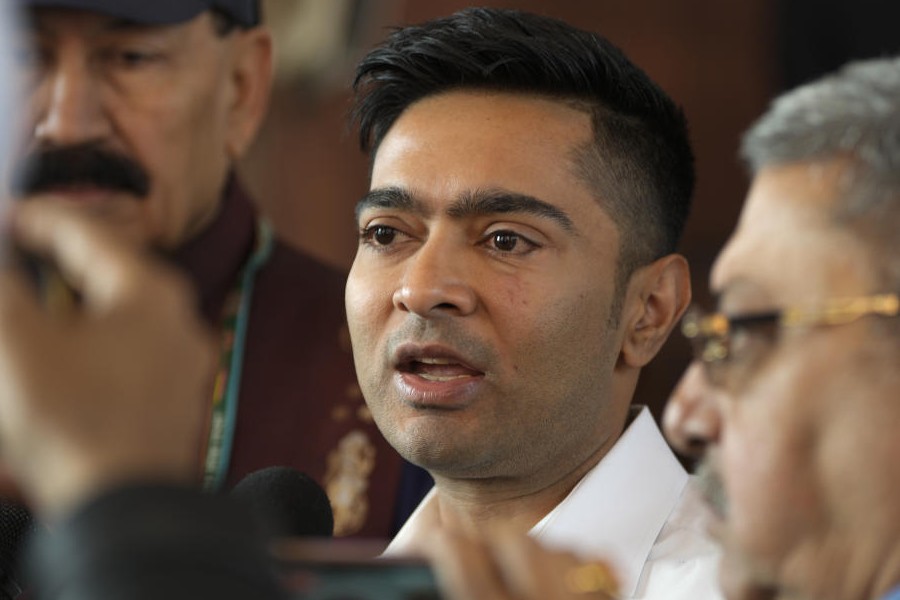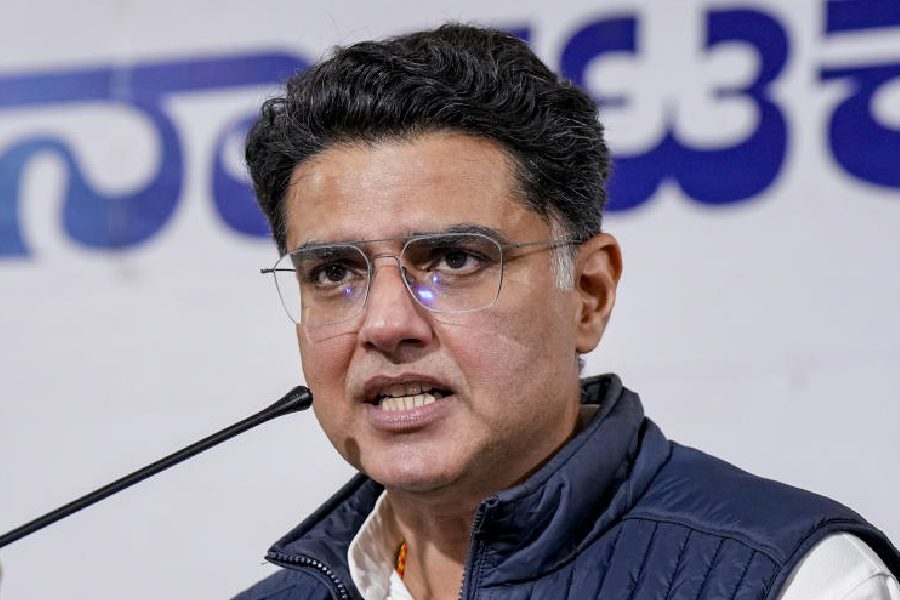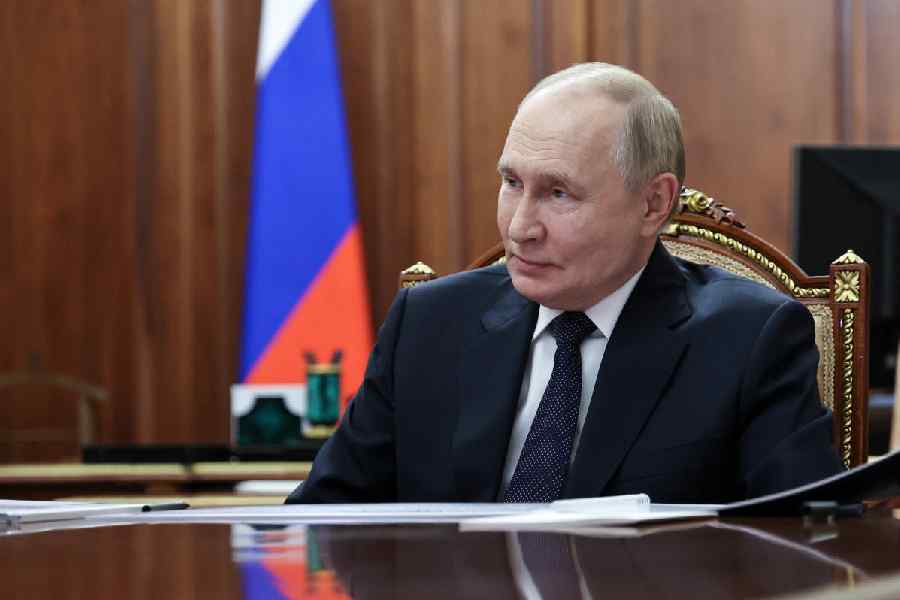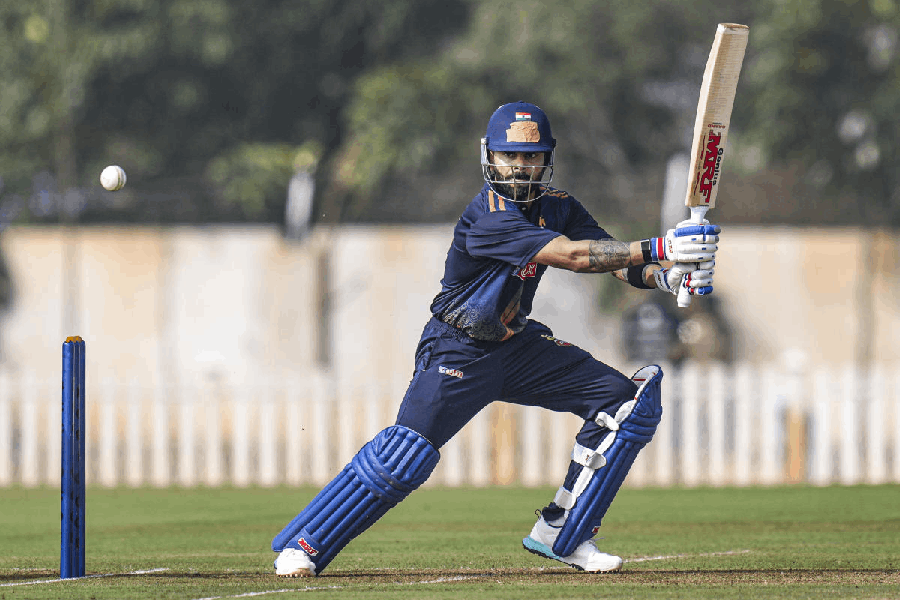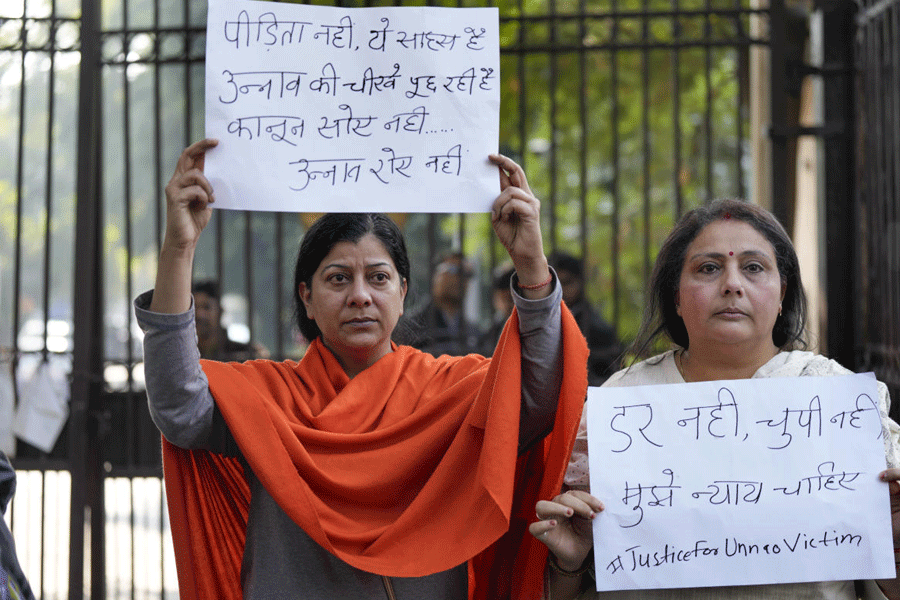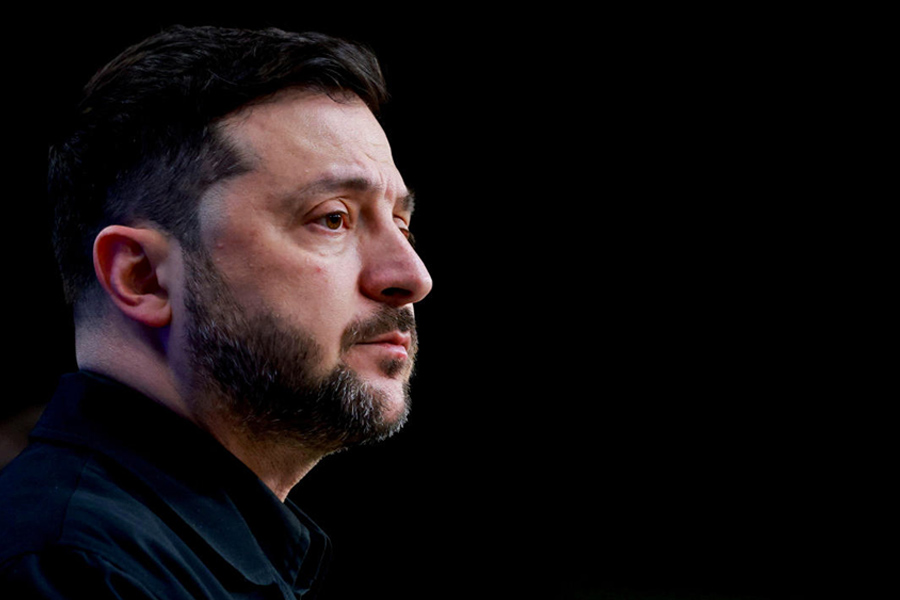 |
 |
 |
 |
 |
 |
| From top: Music is a universal language feels Karunesh; The Bob Sinclar Band; Bob Sinclar; the great guitar guru, John McLaughlin; Nitin Sawhney; Vishwa Mohan Bhatt on his mohan veena |
Turn the clock back to the revolutionary, earthshaking days when youngsters hoped to change the world and George Harrison and Pandit Ravi Shankar made headlines by strumming along together and making music that was a gentle blend of east and west. Harrison called Ravi Shankar the Godfather of World Music. But in Harrison’s heyday if you went looking for a world music rack on your local music store, you’d almost certainly be disappointed.
The times they have a-changed — to misquote Bob Dylan — so if you cut to the present you’ll find that world music has arrived, though in a modest way. Every music store hoping to hit the high notes caters to a growing body of world music buffs in India. We have arrived, a bit belatedly, but nevertheless, we’re here.
On any given day, you’ll find customers making a beeline for the world music racks at Calcutta’s Music World. That’s when Hirak Chakravorty, assistant manager, store operations, steps in to guide them. “It’s the most happening music. This genre of music has no beginning and no end,” he says .
In Delhi’s smart Khan Market, Ashish Arora, owner of Mercury Audio Video, a 30-year-old music shop, has a special section for world music. Arora directs customers to his assistant Wazir who can reel off the names of obscure world music artistes, quicker than you can press the buttons of a hi-tech music system. Wazir says there’s a growing demand for world music. “It’s not a mass market but it’s a niche segment,” he says.
Grammy-winning percussionist Bickram Ghosh defines world music in simple terms. According to Ghosh, “world music includes music that uses traditional ethnic medium, or ethnic forms which are non-popular and non-western.” The parameters to go by would be, according to him, “ethnic medium, an emphasis on acoustics and working within tradition”. And going by these yardsticks, Ghosh feels that a part of his music fits into the genre.
This definition strikes a chord with other experts. Composer and director Jawahar Wattal has a slightly different twist on the same tune: “World music is something that is not commercial in the true sense. It’s not necessarily pop and it depicts a theme that has traditional link to social and values all over the world.” For composer Eshaan Noorani, it is music that has global appeal. “It means ethnic music from all over the world regardless of the nationality of the musicians,” he says.
Indian music has been out there in the forefront of shaping the world music genre and you only need to pick up albums by the genre’s greatest icons to figure that out. However, it would be an incomplete commentary on world music if mention is not made of the influence Africa has exerted in the contemporary world music scene — as popularised by the likes of Bob Sinclar.
John McLaughlin
 The 66-year old guitarist and composer from Yorkshire still holds audiences spellbound with his music. So what makes this pioneer of world music tick at this age? Says Wattal: “His jazz improvisation is outstanding. He brings his own style to the audience.”
The 66-year old guitarist and composer from Yorkshire still holds audiences spellbound with his music. So what makes this pioneer of world music tick at this age? Says Wattal: “His jazz improvisation is outstanding. He brings his own style to the audience.”
McLaughlin is a jazz fusion guitarist who experiments with a range of styles and genres including jazz, Indian classical music and western classical music. In the process he has influenced many guitarists like Steve Morse, Eric Johnson and Mike Stern among others. What’s interesting about McLaughlin is that he’s ever changing and exploring different modes of expression.
Drawn to Indian philosophy and a follower of Indian spiritual guru Sri Chinmoy, McLaughlin is well versed in Indian classical music and has even learnt to play the veena.
His legendary jazz-rock fusion group — the short-lived Mahavishnu Orchestra — did music in the early ’70s that incorporated elements from Indian classical music. In 1975 began his epoch-making association with Zakir Hussain and the group Shakti came into being. The Indian violinist L. Shankar was also part of Shakti, which dissolved in 1978.
McLaughlin later tied up with bass player Jonas Hellborg and in the late ’80s Indian percussionist Trilok Gurtu joined the duo and the John McLaughlin Trio was formed. He revived Shakti along with Hussain in the early ’90s and they have worked together on and off since then.
Must-haves:
Shakti (2002); Thieves and Poets (2003)
Indie connect:
McLaughlin’s iconic group Shakti included tabla maestro Zakir Hussain along with Lakshminarayana Shankar, and mridangam players T.H. “Vikku” Vinayakram and Ramnad V. Raghavan. Their debut album in 1975 was called Shakti too. The group later disbanded and then formed again in 1998 with Hariprasad Chaurasia roped in. McLaughlin’s 2002 Grammy nomination was for the album Saturday Night in Bombay by record label Verve. Along with Zakir Hussain it featured Shankar Mahadevan; Shiv Kumar Sharma; Sivamani and others.
Ry Cooder
 You’ve probably heard his popular track, Vigilante Man on YouTube. But it must be said that Cooder’s music isn’t for everyone. As Wattal points out: “There’s selective audience for Cooder.” And what makes the musician so special? It’s his distinctive expression of music that makes his voice evergreen. “He is a genius. His music will never grow old,” says Wattal.
You’ve probably heard his popular track, Vigilante Man on YouTube. But it must be said that Cooder’s music isn’t for everyone. As Wattal points out: “There’s selective audience for Cooder.” And what makes the musician so special? It’s his distinctive expression of music that makes his voice evergreen. “He is a genius. His music will never grow old,” says Wattal.
Cooder is known for his slide guitar work. He has collaborated with traditional musicians from many countries and has composed soundtracks for more than 20 films.
Mapping the markers of his career is tough. His first forays outside the narrower confines of western music saw him working with Mexican, Hawaiian, soul and rock musicians in the ’70s. Later he got busy with his film soundtracks.
The ’90s saw him exploring the world music scene, with celebrated tie-ups with Pandit Vishwa Mohan Bhatt (Meeting by the River) and then the Malian guitarist Ali Farker Toure with whom he made the Talking Timbuktu album. His interest in traditional Cuban music gave birth to Buena Vista Social Club. And then came his 2005 album Chavez Ravine – a musical narrative on the LA Latino neighbourhood of the same name.
Must-haves:
Chavez Ravine (2005); My Name Is Buddy (2007)
Indie connect:
This three-time Grammy winner won his first Grammy in 1993 when he teamed up with Vishwa Mohan Bhatt to create the album A Meeting by the River produced by Kavichandran Alexander’s Water Lily Acoustics. It won the Grammy as the Best World Music album.
Karunesh
 The Cologne-born graphic designer-turned-musician lives in Hawaii and identifies closely with Indian music and philosophy (having being associated with Osho). Indian string music is heavily incorporated in the 52-year-old’s music and he uses the sitar, sarod and violin generously.
The Cologne-born graphic designer-turned-musician lives in Hawaii and identifies closely with Indian music and philosophy (having being associated with Osho). Indian string music is heavily incorporated in the 52-year-old’s music and he uses the sitar, sarod and violin generously.
There is something for everybody in Karunesh’s music. Take Moonrise, a track that features in one of the Buddha Bar CDs — an obvious choice when a DJ wants to rev up the mood in any party. Says DJ Akbar Sami: “His music is very chilled out and quite different.” Other experts testify that his music truly transcends borders. Says Noorani: “The fact that he could take elements from all over the world adds to the richness of his music. His ability to create something new is what makes his music special.”
Says Karunesh: “I want to go beyond the limits and barriers separating different cultures, mixing different music styles and let them flow and dance together. Music is the one language in the world that everybody understands, across all cultures, religions and beliefs. Rhythm is food for the body, melody nourishes the heart and atmospheres fill the soul — and my music touches the listener on all these three levels.”
Must-haves:
Zen Breakfast (2001); Global Spirit (2003)
Indie connect:
“Spending years in Osho’s Ashram in Pune, I was surrounded with lots of Indian music — traditional as well as modern. I really learned to love the subtleties and feelings of this music. As a Westerner, you have first to get used to those new sounds... Indian music does influence me a lot... There is — besides the celebrative rhythms — a stillness in Indian music which is not easily found in the West. I’m not so familiar with all the different genres. I just go by ear and feeling... The musicians I work with on most tracks are Bikram on bamboo flute, Avinash on violin, Chinmaya Dunster (English) on sarod and Govi (a German friend on Maui) on sitar.”
Nitin Sawhney
 DJ Akbar Sami can’t get over one of Nitin Sawhney’s popular numbers Rain. Sami says this love song is special. “It’s the production and the technicalities that make the song popular,” says Sami. You could YouTube two of his current popular tracks Koyal and Sunset. Sawhney is currently recording London Undersound, an album that will feature musical collaborations with artistes like Imogen Heap, Natty, Anoushka Shankar and Sir Paul McCartney.
DJ Akbar Sami can’t get over one of Nitin Sawhney’s popular numbers Rain. Sami says this love song is special. “It’s the production and the technicalities that make the song popular,” says Sami. You could YouTube two of his current popular tracks Koyal and Sunset. Sawhney is currently recording London Undersound, an album that will feature musical collaborations with artistes like Imogen Heap, Natty, Anoushka Shankar and Sir Paul McCartney.
A trained musician, Sawhney, 44, studied piano, classical and flamenco guitar, the sitar and the tabla. He combines Asian and other ethnic influences with the essence of jazz and electronica. Sawhney joined acid jazz keyboard player James Taylor’s James Taylor Quartet in 1988 and later formed his own group The Jazztones. He later collaborated with percussionist Talvin Singh to form The Tihai Trio. His solo career took off in 1993 when he released his debut album, Spirit Dance. Sawhney has also written music for a number of theatres, films and television shows.
Must-haves:
Beyond Skin (1999); Philtre (in 2005)
Indie connect:
His regular collaborators include Jayanta Bose on vocals and flautist Ronu Majumdar. He also worked with British-born Indian playback singer Reena Bhardwaj on his album Philtre. Indian influences in Sawhney’s music include everything from Indian classical music to Bengali folk. And some of it is evident in his film scores too, the most notable being Mira Nair’s adaptation of Jhumpa Lahiri’s The Namesake.
Bob Sinclar
 Remember his hit single Love Generation — one of the official anthems for the World Cup 2006 held in Germany. He wasn’t born Bob Sinclar though. His real name is Christophe Le Friant but he opted for Bob Sinclar inspired by a French spy movie Le Magnifique. The multi-dimensional musician is a Grammy award-nominated French record producer known more for being a house music DJ, a remixer and his recording label Yellow Productions.
Remember his hit single Love Generation — one of the official anthems for the World Cup 2006 held in Germany. He wasn’t born Bob Sinclar though. His real name is Christophe Le Friant but he opted for Bob Sinclar inspired by a French spy movie Le Magnifique. The multi-dimensional musician is a Grammy award-nominated French record producer known more for being a house music DJ, a remixer and his recording label Yellow Productions.
It might seem anomalous to purists to feature Sinclar in this list. But he has to be given some credit for his Africanism project that popularised African rhythms. He incorporated elements from West Indian and Latin percussion music too and brought to the audiences the resulting Africanism albums. He has been working with African rhythms and world drum patterns since the late ’80s and fused them with electro beats to churn out wild hits.DJ Sunny Sarid calls him a multi-faceted legend. “He’s a trendsetting commercial DJ who is brilliant,” says Sarid. Sinclar has come a long way since his maiden album, Paradise, released in 1998. Don’t miss his latest album Soundz of Freedom that came out in France last May.
Must-haves:
Champs Elysées (2000); Western Dream (2006)
Bickramspeak
 |
Bickram Ghosh is a well-known face in the world music scene. He gives us his take on world music and some of the top artistes:
Q: How do you define world music?
The term has been credited to ethnomusicologist Robert E. Brown who coined it in the 1960s. The term became current in the 1980s as a marketing/classificatory device in the media and the music industry, and it’s generally used to classify any kind of foreign (i.e. non-Western) music. The broadness of this term is such that it now tends to include any form of non-western popular music... However, the way I see it, world music describes forms of music which have ethnic roots, be it folk or classical. Much of the current day fusion music emanating from India fits this description as these projects often have traditional influences.
Q: What is its USP?
The fact that it relies heavily on traditional sounds like the sitar, the tabla, the harp, the didgeridoo etc, means that world music can play a strong role in helping to keep alive our traditions. The sense of “identity” specific to people of various parts of the world is often carried through the music of that region. World music and its various forms help to retain this differentiation between music of various regions and thereby prevents music in this shrinking globe from becoming totally homogeneous.
Q: Who are your top picks?
Shakti, most of John McLaughlin's work, works in this arena by Ravi Shankar, L.Subramanium, Ali Akbar Khan’s Journey, Nitin Sawhney, Taufiq Quereshi’s Rhydhun, my own Rhythmscape series and Folktail, Anoushka’s Rise, Breathing Under Water and many others. As you see, my bias is mostly towards the Indian musicians who have influenced this genre.
Q: What about the following artistes?
1. Ry Cooder:One of the greatest American slide guitarists of all time, Ry Cooder has done phenomenal service for music through his many collaborations (in recent years with Cuban musicians with Buena Vista Social Club). My familiarity with his music rests primarily on his work with our Indian maestro Vishwa Mohan Bhatt in the Grammy awarded Meeting By the River and his work in Buena Vista Social Club. I remember watching the documentary with Pandit Ravi Shankar in Los Angeles and coming out with a lump in my throat.
2. Karunesh: He is a New Age musician from Germany. His music has strong Indian influences prevalent throughout, with liberal use of Indian instruments (like the sitar for example). He has many albums which are quite popular in the New Age , world music front. What I miss in some of his work is the virtuosity of great playing. Otherwise it can be interesting stuff.
3. Nitin Sawhney:I met Nitin for the first time in 1990 on my first professional trip to the UK. He had a small space where he had set up his keyboards and a computer. We jammed for a bit there. Thereafter we met off and on at concerts or airports. I enjoy Nitin’s music very much. He has a beautiful vision and his search for a fresh identity for the British Asian has come out in many of his compositions. He has collaborated with our own Pandit Jayanta Bose in many interesting ways. This has enriched Nitin’s music as Jayantada is a great artist. Nitin’s work is very popular in the West but I am surprised that he is yet to be discovered by many in our country. For those who have not heard his work, please get yourself a CD.
4. John McLaughlin: The great guru of the guitar, John McLaughlin’s importance in the world music scene can never be overestimated. His brilliance as a guitarist and the way he combined techniques derived from the sarod and sitar is unbelievable. Shakti, one of India’s earliest forays into the fusion scene was a dream act with the four greats John McLaughlin, Zakir Hussain, L. Shankar and Vikku Vinayakram setting new standards of virtuosity and definitely bringing a new “sound” into the world of music. Personally, he’s my favourite guitar player in the Indo-fusion scenario.


